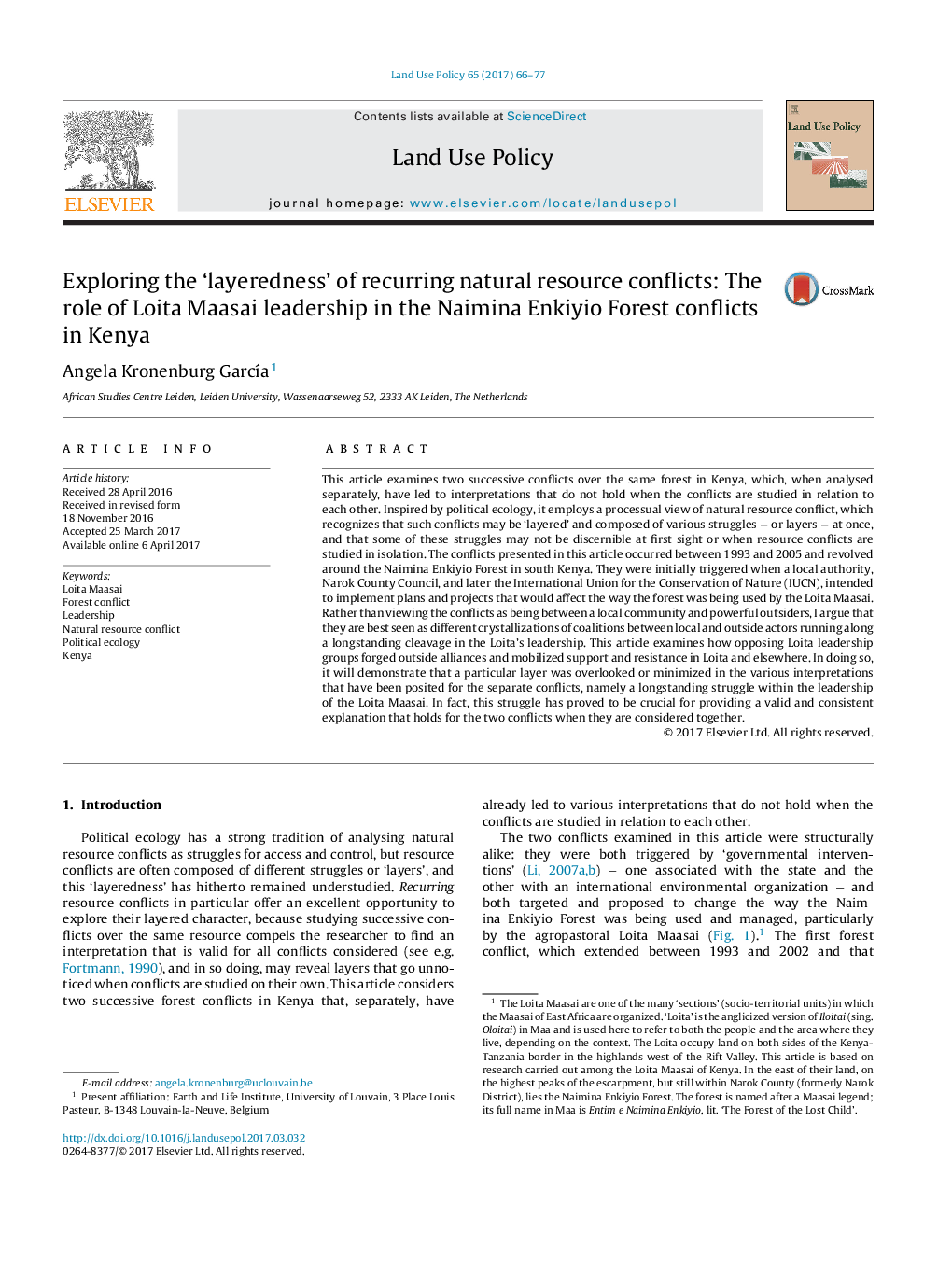| Article ID | Journal | Published Year | Pages | File Type |
|---|---|---|---|---|
| 6461123 | Land Use Policy | 2017 | 12 Pages |
â¢Natural resource conflicts are often layered.â¢Some layers may be masked by others.â¢Masked layers may be uncovered by studying recurring natural resource conflicts.â¢Explores the layeredness of the recurring Naimina Enkiyio Forest conflicts in Kenya.â¢Explains the course and outcome of the conflicts by focusing on a masked layer.
This article examines two successive conflicts over the same forest in Kenya, which, when analysed separately, have led to interpretations that do not hold when the conflicts are studied in relation to each other. Inspired by political ecology, it employs a processual view of natural resource conflict, which recognizes that such conflicts may be 'layered' and composed of various struggles â or layers â at once, and that some of these struggles may not be discernible at first sight or when resource conflicts are studied in isolation. The conflicts presented in this article occurred between 1993 and 2005 and revolved around the Naimina Enkiyio Forest in south Kenya. They were initially triggered when a local authority, Narok County Council, and later the International Union for the Conservation of Nature (IUCN), intended to implement plans and projects that would affect the way the forest was being used by the Loita Maasai. Rather than viewing the conflicts as being between a local community and powerful outsiders, I argue that they are best seen as different crystallizations of coalitions between local and outside actors running along a longstanding cleavage in the Loita's leadership. This article examines how opposing Loita leadership groups forged outside alliances and mobilized support and resistance in Loita and elsewhere. In doing so, it will demonstrate that a particular layer was overlooked or minimized in the various interpretations that have been posited for the separate conflicts, namely a longstanding struggle within the leadership of the Loita Maasai. In fact, this struggle has proved to be crucial for providing a valid and consistent explanation that holds for the two conflicts when they are considered together.
